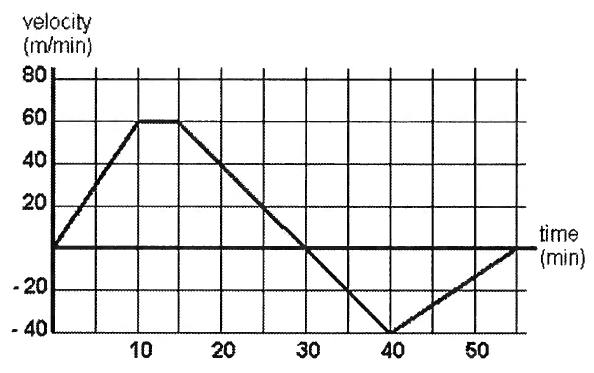PRACTICE PROBLEMS ON DIFFERENTIATION USING PRODUCT RULE
The product rule is the formal rule for differentiating problems where one function is multiplied by another.
(UV)' = UV' + VU'
(UVW)' = UVW'+UV'W+U'VW
Differentiate the following :
(1) x5 tan x
(2) (x2+7x+2) (x3-log x)
(3) (x2-1) (x2+2)
(4) If f(2) = −8, f′(2) = 3, g(2) = 17 and g′(2) = −4
determine the value of (fg)′(2).
(5) f(1) = 2, f′(1) = −1, g(1) = −2, and g′(1) = 3. Find h′(1). If h(x) = (x2+9)g(x)
(6) f(x) = x3g(x), g(−7) = 2, g′(−7) = −9 determine the value of f′(−7).
(7) Differentiate y = xexsinx
(8) Differentiate y = xexsinx
(9) If f(x) = (x2-10)(x2-6x+2) what is the value of f′(6)
(10) Differentiate sin2x cos 3x
(11) Suppose f(x) = x2 + (b + 1) x+ 2c, f(2) = 4, and f'(1) = 2. Find the constants b and c.
(12) The cost of producing x toasters each week is given by C = 1785 + 3x + 0:002x2 dollars. Find dC / dx and interpret its meaning.
Detailed Answer Key
1. Answers :
Let y = x5 tan x
u = x5 and u' = 5x4
v = tan x and v' = sec2 x
Using the formula
(UV)' = UV' + VU'
= (x5)sec2x+(tan x)(5x4)
= x5sec2x+5x4tan x
= x4[xsec2x+tanx]
2. Answers :
Let y = (x2+7x+2) (x3-log x)
u = x2+7x+2 and u' = 2x+7
v = x3 - log x and v' = 3x2 - (1/x)
Formula of product rule
= (x2+7x+2)[3x2 - (1/x)] + (x3 - log x)(2x+7)
3. Answer :
Let y = (x2-1) (x2+2)
u = x2-1 and u' = 2x
v = x2+2 and v' = 2x
Using the formula, we get
(UV)' = UV' + VU'
= (x2-1)(2x)+(x2+2)(2x)
= 2x3-2x+2x3+4x
= 4x3+2x
Another Method :
(x2-1) (x2+2)
= x2(x2) + 2x2 - 1(x2) - 1(2)
= x4+2x2-x2-2
= x4+x2-2
Differentiating
= 4x3 + 2x - 0
= 4x³ + 2x
4. Answer :
If f(2) = −8, f′(2) = 3, g(2) = 17 and g′(2) = −4
determine the value of (fg)′(2).
(fg)'(x) = f(x) g'(x)+f'(x)g(x)
(fg)'(2) = f(2) g'(2)+f'(2)g(2)
= -8(-4) + 17(3)
= 32 + 51
= 83
5. Answer :
f(1) = 2, f′(1) = −1, g(1) = −2, and g′(1) = 3. Find h′(1).
If h(x) = (x2+9)g(x)
Given that :
h(x) = (x2+9)g(x)
Let f(x) = x2+9
h'(x) = (x2+9)g'(x) + g(x) d(x2+9)
h'(x) = (x2+9)g'(x) + g(x) (2x)
h'(1) = (12+9)g'(1) + g(1) 2(1)
= 10(3)+(-2)2
= 30 - 4
= 26
6. Answer :
f(x) = x3g(x), g(−7) = 2, g′(−7) = −9
determine the value of f′(−7).
Given that :
f(x) = x3g(x)
f'(x) = x3g'(x) + g(x) d(x3)
f'(x) = x3g'(x) + 3x2g(x)
f'(-7) = (-7)3g'(-7) + 3(-7)2g(-7)
f'(-7) = -343(2) + 3(49)(-9)
f'(-7) = -686+1323
f'(-7) = 637
7. Answer :
f(π/4) = −4 and f′(π/4) = 2, and let g(x) = f(x) sinx.'
g(x) = f(x) sinx
g'(x) = f(x) d(sinx) + sinx f'(x)
g'(x) = f(x) cosx + sinx f'(x)
g'(π/4) = f(π/4) cosπ/4 + sinπ/4 f'(π/4)
= -4(1/√2) + (1/√2)2
= -2/√2
= -√2
8. Answer :
Let y = xexsinx
(uvw)' = uvw'+uv'w+u'vw ---(1)
u = x and u' = 1
v = ex and v' = ex
w = sin x and w' = cos x
By applying the values in (1), we get
= xex cosx + xex sinx + 1ex (sinx)
= ex (x cosx + x sinx + sinx)
9. Answer :
If f(x) = (x2-10)(x2-6x+2) what is the value of f′(6)
f'(x) = (x2-10)d(x2-6x+2) + (x2-6x+2) d(x2-10)
f'(x) = (x2-10)(3x-6) + (x2-6x+2) (2x)
f'(6) = (62-10)(3(6)-6) + (62-6(6)+2) (2(6))
f'(6) = (36-10)(12) + (36-36+2) 12
f'(6) = (26)(12) + 2
f'(6) = 312+12
f'(6) = 324
10. Answer :
Let y = sin2x cos 3x
u = sin 2x, u' = 2 cos 2x
v = cos 3x, v' = -3 sin 3x
Using product rule, we get
sin 2x(-3 sin 3x) + cos 3x(sin 2x)
sinx2x(-3 sin 3x) + cos 3x(sin 2x)
So, the differentiation of the given function is
-3(-3 sin 3x) + cos 3x(sin 2x)
11. Answer :
Suppose f(x) = x2 + (b + 1) x + 2c, f(2) = 4, and f'(1) = 2. Find the constants b and c.
f(x) = x2 + (b + 1) x + 2c
f(2) = 4
Applying x = 2, we get
f(2) = 22 + (b + 1) (2) + 2c
4 + 2b + 2 + 2c = 4
2b + 2c = -2
b + c = -1-----(1)
f'(x) = 2x + (b + 1) (1) + 0
f'(x) = 2x + b + 1
f'(1) = 2
2 = 2(1) + b + 1
2 = 2 + b + 1
b = -1
Applying the value of b in (1), we get
-1 + c = -1
c = -1 + 1
c = 0
So, the values of b and c are -1 and 0 respectively.
12. Answer :
C = 1785 + 3x + 0.002x2 dollars
dC/dx = 0 + 3(1) + 0.002(2x)
= 3 + 0.004x
Cost change = 3 + 0.004x
Kindly mail your feedback to v4formath@gmail.com
We always appreciate your feedback.
©All rights reserved. onlinemath4all.com
Recent Articles
-
AP Calculus AB Problems with Solutions (Part - 19)
Apr 24, 25 11:10 PM
AP Calculus AB Problems with Solutions (Part - 19) -
AP Calculus AB Problems with Solutions (Part - 18)
Apr 24, 25 11:06 PM
AP Calculus AB Problems with Solutions (Part - 18) -
Derivative of Absolute Value of x Using Limit Definition
Apr 23, 25 11:11 AM
Derivative of Absolute Value of x Using Limit Definition
